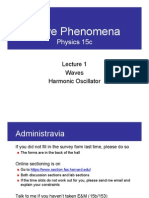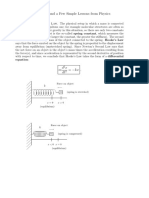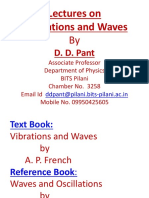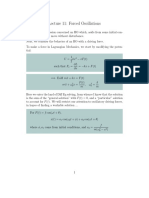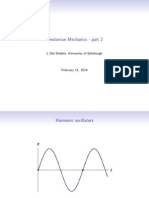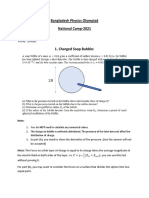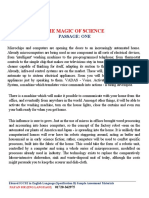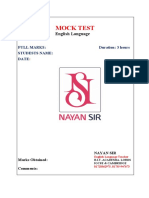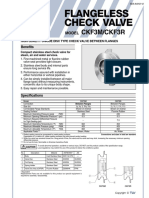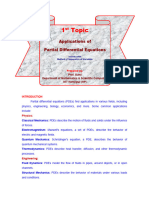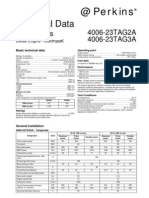0% found this document useful (0 votes)
128 views11 pagesHarmonic Motion Equations Guide
This document discusses different types of harmonic motions, including:
1) Simple harmonic motion, which is described by the differential equation ẍ + ω2x = 0, with solutions of x = Acos(ωt) or x = Aeiωt.
2) Difficult harmonic motions, which include an extra constant force, an extra oscillating force, a drag force, or both a drag and extra oscillating force. The differential equations describing each case are provided.
3) Methods for solving the differential equations for different harmonic motion cases, including using complex numbers and Euler's equation. The principle of superposition is also introduced.
Uploaded by
Abid KhanCopyright
© © All Rights Reserved
We take content rights seriously. If you suspect this is your content, claim it here.
Available Formats
Download as PDF, TXT or read online on Scribd
0% found this document useful (0 votes)
128 views11 pagesHarmonic Motion Equations Guide
This document discusses different types of harmonic motions, including:
1) Simple harmonic motion, which is described by the differential equation ẍ + ω2x = 0, with solutions of x = Acos(ωt) or x = Aeiωt.
2) Difficult harmonic motions, which include an extra constant force, an extra oscillating force, a drag force, or both a drag and extra oscillating force. The differential equations describing each case are provided.
3) Methods for solving the differential equations for different harmonic motion cases, including using complex numbers and Euler's equation. The principle of superposition is also introduced.
Uploaded by
Abid KhanCopyright
© © All Rights Reserved
We take content rights seriously. If you suspect this is your content, claim it here.
Available Formats
Download as PDF, TXT or read online on Scribd
/ 11





